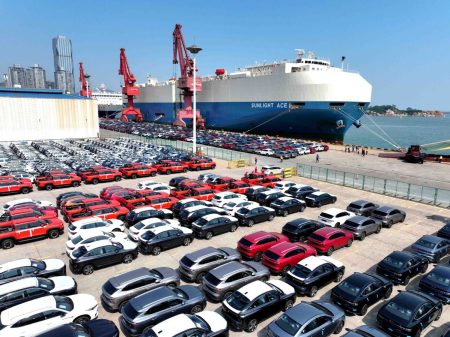The global foam sandwich panels market is expected to reach $5.3 billion by the end of 2024, according to a new report by Exactitude Consultancy. The market is set to grow steadily at a compound annual growth rate (CAGR) of 7.2% from 2025 to 2034. This growth is being driven by increasing demand from several industries, including construction, automotive, marine, and aerospace.
Foam sandwich panels are lightweight and durable materials made of two outer layers and a foam core. They are commonly used in building insulation, cold storage units, transport vehicles, and more. Their growing popularity is linked to their energy-saving benefits, easy installation, and structural strength. The use of such panels is increasing in both developed and developing countries, especially where energy-efficient construction is a focus.
The newly released report from Exactitude Consultancy, titled “Foam Sandwich Panels Market,” offers detailed data on global sales, volume, price trends, company rankings, and market shares. It also provides insights into future trends and projections based on data from 2020 to 2034. The study combines both numerical and descriptive analysis to help companies plan for long-term growth.
The research highlights market growth by region, product type, application, end user, technology, and distribution channel. The most commonly used panel types include polyurethane, polystyrene, and mineral wool-based products. These materials are widely adopted in industries such as building construction, refrigeration, automotive, and marine.
The report also breaks down the market by end users, such as residential, commercial, and industrial sectors. With ongoing urbanization and rising construction activities worldwide, the need for efficient insulation materials has become critical. Foam sandwich panels offer a solution by reducing energy costs and increasing building performance.
In terms of distribution, both direct sales and online sales are contributing to the market’s expansion. The report notes that modular and composite technologies are being increasingly adopted by manufacturers to meet changing industry requirements.
According to the report, several major companies are playing a key role in the global foam sandwich panels market. These include Kingspan Group, Metl-Span, Nucor Corporation, Panel Built Inc., AEP Span, Alucobond, Isowall Group, PPG Industries, Sika AG, and others. These players are involved in activities such as innovation, new product launches, and global partnerships to improve their market share.
The report also outlines various recent developments in the market. For example, companies are investing in research and development to create high-performance panels with enhanced thermal resistance and fireproof capabilities. Others are expanding their production capacities or forming alliances to enter new regional markets.
The regional outlook in the report covers North America, Europe, Asia-Pacific, the Middle East and Africa, and South America. North America and Europe are mature markets with steady demand, while Asia-Pacific is showing rapid growth due to large-scale construction and industrialization, especially in China and India.
In terms of research method, the study combines both primary and secondary data sources. Surveys, interviews, and expert consultations were used alongside data from reliable publications. The analysis also covers market limitations, potential biases, and data accuracy checks to ensure reliable results.
Some of the key trends shaping the market include the move towards green building materials, rising demand for prefabricated buildings, and the use of lightweight materials in vehicle manufacturing. These trends are opening up new business opportunities and driving innovation in panel production.
Despite strong growth prospects, the market does face some challenges. These include fluctuating raw material costs, regulatory standards in different regions, and competition from alternative building materials. However, manufacturers are responding by developing eco-friendly products and improving production efficiency.
With growing awareness of sustainable construction and energy efficiency, foam sandwich panels are set to play a bigger role in global infrastructure projects. The next decade will likely see increased use of these panels in both traditional and modern building designs.















